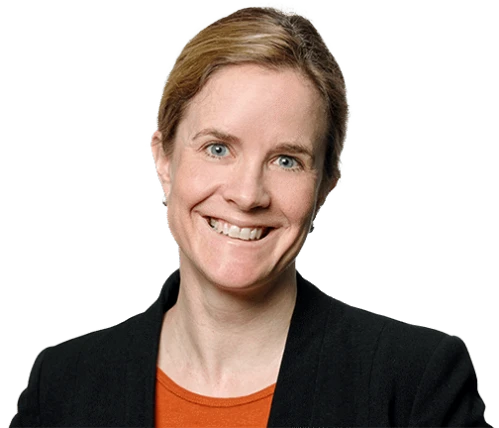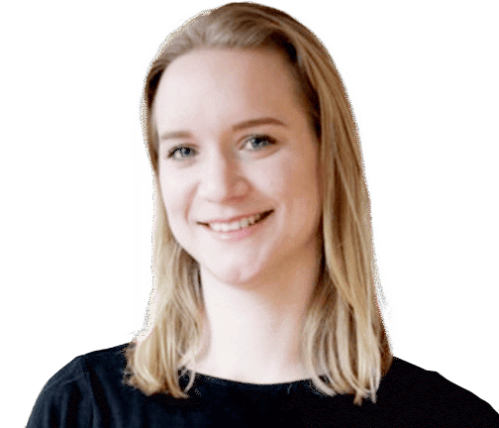For more than 60 years, Lifeline Australia has been at the forefront of advocating for an Australia free from suicide, offering critical support to those in crisis. The organisation has long recognised the importance of bringing in the voices of people with lived experience – including people who have experienced emotional distress, domestic violence, or suicide – to enhance outcomes for people seeking their services. Lifeline Australia had developed a range of initiatives to engage people with lived experience, such as advisory groups, ambassador programs, and user testing.
Lifeline Australia wanted to engage with people with lived experience even better and engaged Nous and an independent lived experience expert advisor, Carrie Lumby, to support the co-development of a robust framework in close collaboration with people with lived experience.
“The process was a great opportunity to reflect on our ways of working and consider how we can embed the unique insights that people with lived experience bring to Lifeline Australia and its work,” says Anna Brooks, Chief Research Officer at Lifeline Australia.
Lifeline Australia’s lived experience framework developed through the process can be found here.
Embedding the voice of lived experience across the organisation
In developing the framework, Lifeline Australia sought to highlight the value of lived experience perspectives and expertise across Lifeline Australia and develop a clearer and more consistent approach to how people with lived experience were engaged across the organisation. The three key goals from the lived experience framework were:
1. A positive experience for people with lived experience who choose to engage with Lifeline Australia and for Lifeline Australia staff who are involved in the engagements. Lifeline Australia’s framework established key principles for how to engage with people with lived experience, what this means for practices and processes when engaging with different cohorts, and what capabilities and tools are required.
2. The perspectives of people with lived experience inform Lifeline Australia’s strategic decisions and service design. The framework includes an outline of the different kinds of mechanisms that Lifeline Australia will use to engage with people with lived experience and the purpose of each.
3. Continuous improvement of how Lifeline Australia engages with people with lived experience. The framework will be iterative; Lifeline Australia is committed to continually assessing and refining mechanisms and opportunities for engagement with people with lived experience to ensure that all Lifeline’s activities are based on input from the right people, at the right time, and for the right reason
"Best practice in engaging with people with lived experience in the mental health sector is constantly evolving and requires ongoing reflection and adaptation,” says Nous Principal Marianna Brungs. “It was a privilege to work with Lifeline Australia to strengthen its ability to serve the Australian community.”
Iteratively co-developing the framework
The process was divided into discovery and co-development. This structured approach allowed Lifeline Australia to first understand how its current mechanisms were working and best practice across the sector, and then iteratively co-develop the framework. More than 50 stakeholders were engaged during the project, many at multiple times.
Discovery and environmental scanning
Nous started the discovery phase by engaging with a diverse group of people with lived experience to ensure their perspectives were embedded into the process and objectives, including people from Lifeline Australia’s Lived Experience Advisory Groups, Ambassadors, and the 13YARN Lived Experience Committee. This was followed by discussions with teams across Lifeline Australia to understand how they were engaging with people with lived experience and the opportunities for improvement.
At the same time, Nous developed an environmental scan of best practice in lived experience engagement through a desktop review and interviews with a range of other sector organisations on how they approached lived experience engagement. This helped establish a comprehensive understanding of the Lifeline Australia’s context and current practices, and benchmarked Lifeline Australia’s practices against the sector.
Co-development workshops
Following the discovery phase, Nous facilitated a series of co-development workshops that brought together a diverse range of stakeholders, including internal Lifeline Australia teams and people with lived experience, to collaboratively shape the framework. The draft elements of the framework were developed through these discussions, including the guiding principles, enablers, and processes intended to underpin engagement activities at Lifeline Australia.
“By better integrating the insights and expertise of people with lived experience across the organisation, Lifeline Australia can make sure people have better access to services shaped by the very people who understand their needs the best,” says Carrie Lumby
Nous played an independent facilitator role in the process, working closely with the lived experience expert advisor. “Working closely with Carrie meant we could facilitate meaningful and productive conversations between people in a safe way,” says Nous Director Kasia Mierzejewska.
Key elements of the framework
Lifeline Australia’s lived experience framework has three core components:
- Purpose and principles. The core components of the framework were built around a set of guiding principles, which emphasised the importance of respect, safety, and inclusivity in all engagements. These principles will guide Lifeline Australia’s approach to engaging with people with lived experience, ensuring engagements are meaningful and empower participants to contribute in a way that feels safe and supportive.
- Processes and practices. Specific processes were outlined for engaging people with lived experience in areas like marketing and domestic violence support to provide practical detail on how the principles work in practice.
- Enablers. An essential part of the framework was identifying enablers that can make sure the framework is sustainable. These include leadership, organisational readiness, staff capability, resourcing, and a governance structure to oversee the engagement mechanisms.
No such thing as one-size-fits-all
Throughout the project, several critical insights emerged. One of the most significant was that there is no universal "best practice" for embedding lived experience into organisational practices. Instead, each organisation needs a carefully considered and tailored approach that responds to the needs of people with lived experience in a way that reflects the organisation’s unique characteristics and goals.
“We learned from other organisations during the discovery phase and hope to share our work and continue to learn from each other so we can all do it better,” says Adrienne Wilson from Lifeline Australia.
Another important takeaway was the need for engagement practices that are flexible and accessible, tailored to meet the diverse needs and preferences of people with lived experience. This approach ensures that all participants feel safe, respected, and empowered to contribute their perspectives.
Where to for Lifeline Australia?
The development of the lived experience framework marks a significant milestone for Lifeline Australia in its ongoing commitment to embedding the voices of people with lived experience in shaping its services.
Through collaborative discovery and co-development, Lifeline Australia created a comprehensive framework that is guiding how the organisation engages with people with lived experience, ensuring their input leads to better outcomes for all involved.
The project’s success lies not only in the creation of a robust framework but also in the capacity it builds within Lifeline Australia’s staff to engage better with individuals who have lived experience. The framework will continue to evolve, ensuring that Lifeline Australia continues to improve how it engages with people with lived experience, contributing to a healthier, more supportive mental health ecosystem in Australia.
“Lifeline Australia is embedding the framework through a range of activities to uplift our practices and processes. Through this, we’ll continue to obtain feedback on how to keep improving the Framework,” says Anna Brooks from Lifeline Australia
"The framework will not only improve the experiences of people with lived experience when engaging with Lifeline Australia,” says Brungs. “It will help to empower Lifeline Australia staff with a common language and tools to engage confidently and effectively."
What you can learn from our work with Lifeline Australia
A collaborative, people-centred approach is vital to design a lived experience framework. This means it is genuinely co-developed with people with lived experience and functions as a dynamic tool for ongoing improvement within the organisation. This often requires flexibility within the process to meet the evolving needs of the project.
Working with a lived experience expert advisor is essential. This ensures all aspects of the development process are grounded in lived expertise and fosters a safe and productive environment where collaboration thrives and voices are meaningfully included.



